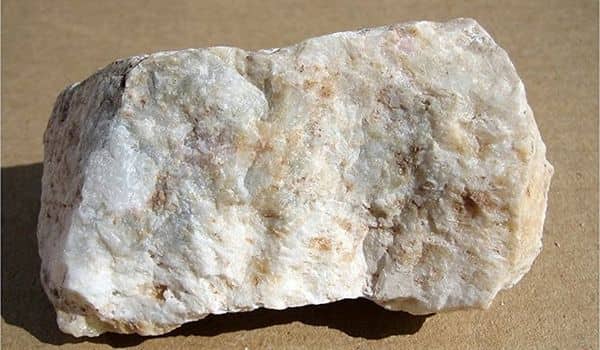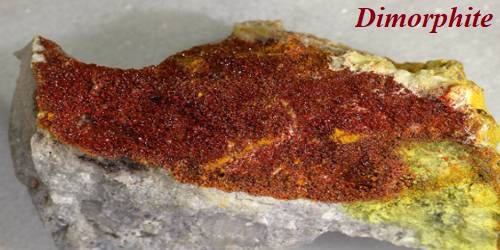Nepheline is an important feldspathoid mineral. It also called nephelite, is a rock-forming mineral in the feldspathoid group: a silica-undersaturated aluminosilicate, Na3KAl4Si4O16, that occurs in intrusive and volcanic rocks with low silica, and in their associated pegmatites. It is the characteristic mineral of alkaline plutonic rocks, particularly nepheline syenites and nepheline gneisses. Specimens are usually white in color, often with a yellowish or grayish tint.
The name Nepheline comes from the Greek word nephele, which means “cloud,” because it becomes strongly clouded when put in strong acid. It is used in glass and ceramic manufacturing and other industries, and has been investigated as an ore of aluminium.
General Information
- Category: Tectosilicate, feldspathoid
- Formula: (repeating unit) (Na,K)AlSiO4
- Crystal system: Hexagonal
- Crystal class: Pyramidal (6)
- Formula mass: 146.08 g/mol
- Color: White, Gray, Brown, Brownish gray, Reddish white.

Properties
Nepheline crystals are rare and belong to the hexagonal system, usually having the form of a short, six-sided prism terminated by the basal plane. It is white, grey or yellow in colour with a vitreous lustre and a poor cleavage. It is found in compact, granular aggregates, and can be white, yellow, gray, green, or reddish. The hardness is 5.5 – 6, and the specific gravity 2.60 – 2.65. It is often translucent with a greasy luster.
- Crystal habit: Massive granular to prismatic
- Twinning: On [1010], [3365], and [1122]
- Cleavage: [1010] Poor
- Fracture: Subconchoidal
- Mohs scale hardness: 6
- Luster: Vitreous – greasy
- Streak: White
- Specific gravity: 2.55 – 2.65, average = 2.59
- Optical properties: Uniaxial (-)
Occurrence
Nephelinite occurs in beautiful crystal form with mica, garnet, and sanidine feldspar on Monte Somma, Vesuvius, Italy. It is a rock-forming mineral found in silica-poor igneous rocks. These include nepheline syenite, foidite, and phonolite. It also occurs in intermediate igneous rocks with aegirine and augite and in some volcanic and metamorphic rocks.
Notable outcrops of nepheline-bearing rocks are found on the Kola Peninsula; in Norway and South Africa; and at Litchfield, Maine; Magnet Cove, Arkansas; and Beemerville, New Jersey, in the United States. Syenites found near Bancroft, Ontario contain large deposits of high-purity nepheline.
Uses
Most of the nepheline used for this purpose comes from Ontario. Nepheline produced as a byproduct of apatite mining in the Kola Peninsula has found uses in ceramics, leather, rubber, textiles, wood, and the oil industry. It can be used as a filler in paints, plastics, and foam rubber, and has been investigated as an alternative to bauxite for aluminium manufacturing.
Information Source:
















